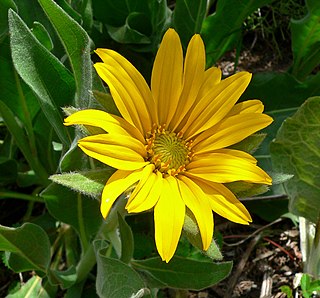
The International Code of Nomenclature for algae, fungi, and plants (ICN) is the set of rules and recommendations dealing with the formal botanical names that are given to plants, fungi and a few other groups of organisms, all those "traditionally treated as algae, fungi, or plants". It was formerly called the International Code of Botanical Nomenclature (ICBN); the name was changed at the International Botanical Congress in Melbourne in July 2011 as part of the Melbourne Code which replaced the Vienna Code of 2005.

In biology, a type is a particular specimen of an organism to which the scientific name of that organism is formally attached. In other words, a type is an example that serves to anchor or centralize the defining features of that particular taxon. In older usage, a type was a taxon rather than a specimen.

Washingtonia robusta, known by common name as the Mexican fan palm, Mexican washingtonia, or skyduster is a palm tree native to the Baja California peninsula and a small part of Sonora in northwestern Mexico. It is naturalized in Florida, California, Hawaii, Texas, parts of the Canary Islands, France, Italy, Israel, Jordan, Lebanon, Qatar, Spain, Réunion, and Morocco.

Grevillea robusta, commonly known as the southern silky oak, silk oak or silky oak, silver oak or Australian silver oak, is a flowering plant in the family Proteaceae. It is a tree, the largest species in its genus but is not closely related to the true oaks, Quercus. It is a native of eastern coastal Australia, growing in riverine, subtropical and dry rainforest environments.

Gigantochloa is a tropical Asian and Papuasian genus of giant clumping bamboos in the grass family. It is found in southern China, Southeast Asia, the Indian subcontinent, and New Guinea.

Viola canadensis is a flowering plant in the Violaceae family. It is commonly known as Canadian white violet, Canada violet, tall white violet, or white violet. It is widespread across much of Canada and the United States, from Alaska to Newfoundland, south as far as Georgia and Arizona. It is a perennial herb and the Latin specific epithet canadensis means of Canada.

Eucalyptus robusta, commonly known as swamp mahogany or swamp messmate, is a tree native to eastern Australia. Growing in swampy or waterlogged soils, it is up to 30 m (100 ft) high with thick spongy reddish brown bark and dark green broad leaves, which help form a dense canopy. The white to cream flowers appear in autumn and winter. The leaves are commonly eaten by insects, and are a food item for the koala. It is an important autumn-winter flowering species in eastern Australia, and has been planted extensively in many countries around the world. Its timber is used for firewood and in general construction.
Quercus robusta, also called robust oak, is a rare North American species of trees in the beech family. It has been found only in the Chisos Mountains inside Big Bend National Park in western Texas.
Quercus rysophylla, the loquat leaf oak, is a Mexican species of oak in the red oak section. It is native to the Sierra Madre Oriental in the States of Tamaulipas, Nuevo León, San Luis Potosí, Veracruz, and Hidalgo in northeastern Mexico.
Julian Alfred Steyermark was an American botanist. His focus was on New World vegetation, and he specialized in the family Rubiaceae.

Wyethia is a genus of North American flowering plants in the sunflower family.
Limnodea, with the common name Ozark grass, is a genus of North American plants in the grass family. The type species is Greenia arkansanaNutt..

Opuntia robusta, the wheel cactus, nopal tapon, or camuesa, is a species of cactus in the family Cactaceae. It is native and endemic to central and northern Mexico to within 100 miles (160 km) of the Arizona and New Mexico borders where it grow from 5,000 to 10,000 feet on rocky slopes, open shrub lands, woodlands and mixed with other cactus and succulents.

Haploesthes is a North American genus of flowering plants in the family Asteraceae. It grows in Mexico and in the southwestern United States. They are perennial herbs or subshrubs with yellow flower heads.

Cannomois is a group of plants in the Restionaceae described as a genus in 1828. The entire genus is endemic to Cape Province in South Africa.
Flaveria oppositifolia is a rare Mexican plant species of Flaveria within the family Asteraceae. It has been found only in northeastern Mexico, from Tamaulipas west to Coahuila, south as far as Hidalgo and Aguascalientes. Some sources report the species to be present in the State of Texas in the United States, but the Texas populations have been recognized as a distinct species, F. brownii.
Flaveria robusta is a rare Mexican plant species of Flaveria within the family Asteraceae. It has been found only in Colima and nearby western Michoacán in west-central Mexico.
Haploesthes greggii, common name false broomweed, is a North American species of flowering plants in the family Asteraceae. It grows in northeastern Mexico and in the south-central and southwestern United States.
Haploesthes fruticosa is a Mexican species of flowering plants in the family Asteraceae. It grows in northeastern Mexico.
Hymenoxys robusta is a South American species of flowering plant in the daisy family. It has been found primarily in Bolivia with a few populations in nearby Peru and Argentina.










